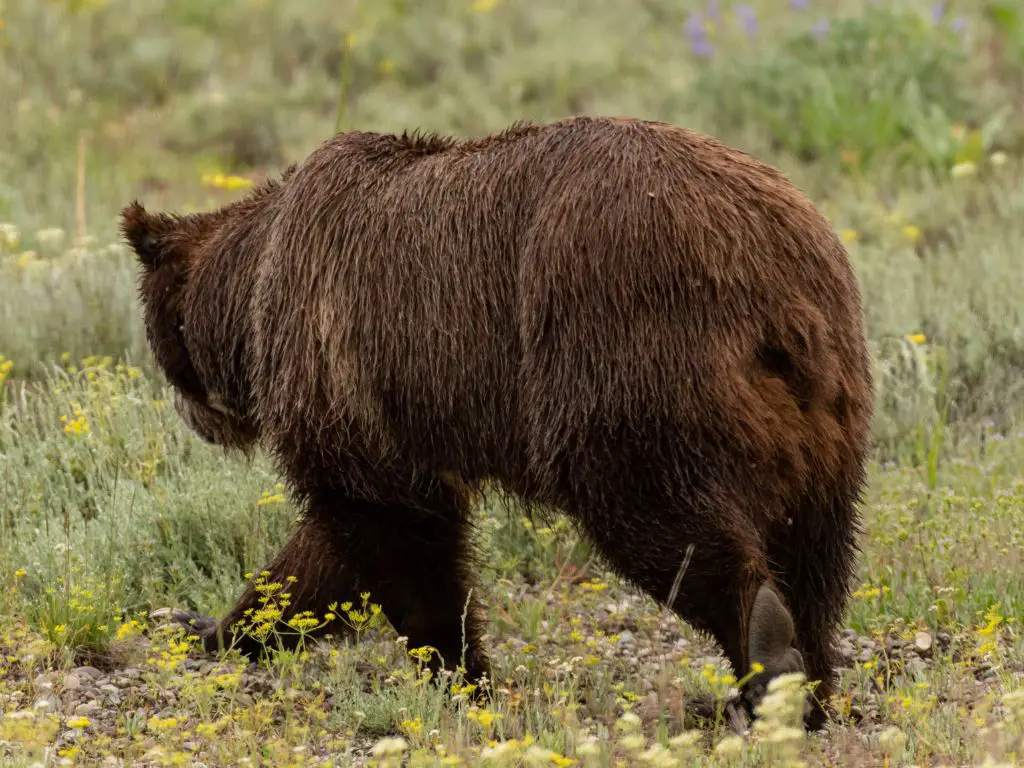Bears are a group of large carnivorous mammals found in various parts of the world. There are eight species of bears found on Earth, including the polar bear, brown bear, black bear, sun bear, sloth bear, spectacled bear, Asiatic black bear, and giant panda. So, do bears have tails? Let’s find out why do bear have tails, why they are so short?
Do bears have tails
The answer is both yes and no. Some species of bears do have tails, while others do not. For example:
- the polar bear
- brown bear
- black bear
- and sun bear

All have short tails that are typically less than six inches long. These tails are usually not very noticeable, as they are often hidden by the bear’s fur.
On the other hand, the following bears have no tail:
- the sloth bear
- spectacled bear
- Asiatic black bear
- and giant panda
The sloth bear has a small patch of fur on its rump, but it is not considered a tail. The spectacled bear, Asiatic black bear, and giant panda also do not have tails at all.
In general, bear tails are not very useful for balance or movement. They do not have the same function as the tails of other animals, such as cats or dogs, which use their tails to help them maintain balance and stability while running or climbing.
Despite their lack of functional tails, bears are still able to move around with ease thanks to their strong legs and paws. They are also agile climbers and swimmers, and are capable of adapting to a wide range of environments and habitats.
In conclusion, some species of bears do have tails, while others do not. These tails are typically short and not very noticeable, and do not serve the same function as the tails of other animals. However, bears are still able to move around with ease thanks to their strong legs and paws, and are adaptable to many different environments.
Why do bears have tails
Bears, like all mammals, have tails because they evolved from ancestors that had tails. The evolutionary purpose of a tail can vary depending on the species. For example, the tail of a cat or a dog is used for balance and stability while running or climbing. The tail of a squirrel is used for grasping branches and other objects.

However, the tails of bears do not seem to have a particularly important function. Bear tails are typically short and less than six inches long. They are not used for balance or movement, and do not have the same function as the tails of other animals.
It is possible that the tails of bears serve some other purpose that we do not yet understand. Some scientists believe that the tails of bears may be used for communication or social bonding, as bears have been observed waving their tails while interacting with other bears.
However, more research is needed to fully understand the evolutionary purpose of bear tails. Despite their lack of a clear function, bear tails do not seem to be a hindrance to the animals, and bears are able to move around and adapt to various environments with ease.
Why do bears have short tails
Here are a few reasons why bears have short tails:
- Evolution: Bears have short tails because they evolved that way. The length and function of an animal’s tail can vary depending on the species and its evolutionary history.
- Function: The tails of bears do not seem to serve a particularly important function. They are not used for balance or movement, and do not have the same function as the tails of other animals, such as cats or dogs.
- Protection: The tails of bears do provide some protection from the cold and potential parasite attacks. They are covered in thick fur, which helps to insulate their bodies and keep them warm in cold environments. The tail can also act as a sort of “blanket” to cover and protect sensitive body parts.
- Adaptation: Bears are adapted to live in a variety of environments, and the length of their tails is not a hindrance to their movement or survival. They are able to move around and adapt to their surroundings with ease, even without long tails.
- Not all species: It’s worth noting that not all species of bears have tails. The sloth bear, spectacled bear, Asiatic black bear, and giant panda do not have tails. These species do not rely on their tails for protection from the cold or parasites, as they have other adaptations that serve these purposes.

Did bears ever have long tails
It is unlikely that bears ever had long tails. There is no evidence to suggest that bears ever had long tails. The fossil record shows that bears have always had short tails, and it is likely that this is a trait that has been retained throughout their evolutionary history.
Do panda bears have tails
Giant pandas, also known as panda bears, do not have tails. Pandas are a type of bear that is native to China and are known for their distinctive black and white fur. They have a round head, short ears, and a stocky body, but do not have a tail.

Do polar bears have tails
Yes, polar bears do have tails. Polar bears are a large carnivorous mammal found in the Arctic regions of the world, including Canada, Alaska, Russia, and Greenland. They are known for their thick white fur, which helps to insulate their bodies and keep them warm in the cold Arctic climate.
Polar bears have short tails that are typically less than six inches long. These tails are not very noticeable, as they are often hidden by the bear’s fur. The tails of polar bears do not seem to serve a particularly important function, and are not used for balance or movement.

Do black bears have tails
Yes, black bears do have tails that are typically less than six inches long. Black bears are a large carnivorous mammal found in various parts of North America, including Canada, the United States, and Mexico. They are known for their black fur and are the most common and widespread species of bear in North America.

Do brown bears have tails
Just like black bear, brown bears do have less than six inch tails. Brown bears are a large carnivorous mammal found in various parts of the world, including North America, Europe, and Asia. They are known for their brown fur and are one of the largest and most powerful species of bear.

Do sun bears have tails
Yes, sun bears also have tails similar to that of black and brown bears. Sun bears are a small species of bear found in the tropical forests of Southeast Asia. They are known for their golden-brown fur and distinctive white chest patch, which gives them their name.








Leave a Reply